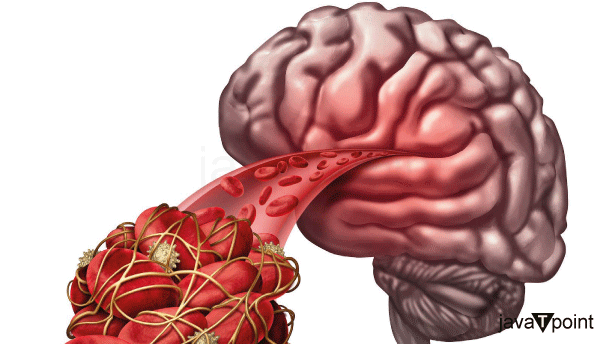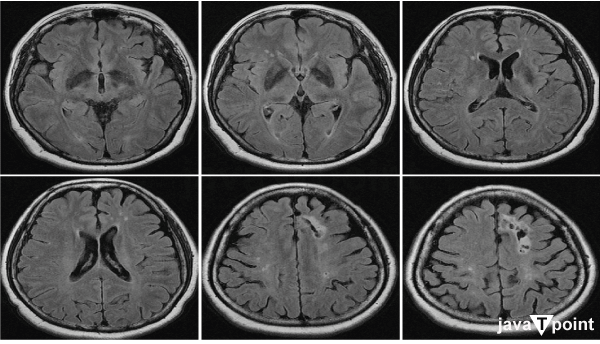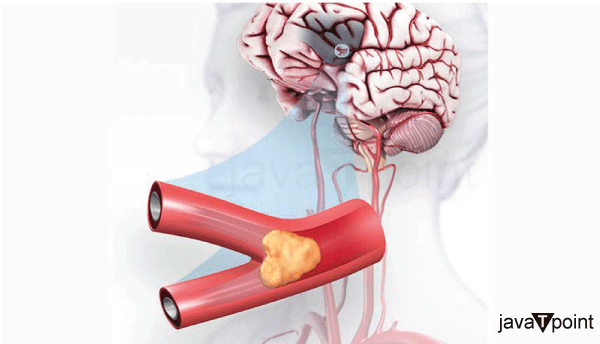Blood Clot
According to many experts, one of the most important organs in the human body is the brain. The nervous system's control center is the human brain. This organ serves as the center of the intellect, the translator of the senses, the creator of movement in the body, and the behavior controller. A brain blood clot may impact these processes.
A brain attack, commonly referred to as a stroke, is a severe health risk brought on by a blood clot in the blood veins supplying the brain. Depending on what part of the brain is impacted, these clots may damage speech, make you unable to move or feel one side of your body, or have other effects.
What is Blood Clot?
A blood vessel leaks and fills with blood, obstructing an artery, which leads to the formation of a blood clot in the brain. When this occurs, the brain may become isolated and starved of oxygen. This may harm the brain cells, and it may even be fatal.

While some individuals may encounter a small incidence of this event without any symptoms, others could experience more severe side effects, including seizures or even death. But even before any of these things occur, you can encounter certain red flags that you must be aware of. You should have a blood clot in brain therapy if you recognize any of these symptoms.
Blood clots are aggregates that often develop after an injury to limit blood loss. But what if a blood clot forms in your blood arteries and blocks the flow of blood? It may be really risky.
Types of Blood Clots
Thrombosis and embolism are two different forms of blood clots.
1. Thrombosis
When a blood artery in the body is injured and filled with blood, thrombosis occurs, and a blood clot forms. Trauma or any other medical issue might be to blame for this. These blood clots don't move.
2. Embolism
When a foreign item blocks an artery, embolism ensues. This may happen if a blood clot, clotting substance, or tissue blocks the artery. Typically, these blood clots shift from their initial location to another area of the brain.
Symptoms of Brain Clot
- Headaches that are severe and often occur - You can encounter a headache that does not go away with rest. Your brain will still experience pain and discomfort even if you are not moving around physically. Another sign of a blood clot might be sudden headaches, pressure in the head, and numbness across the face and body.
- Slurring in speech- As your brain is deprived of oxygen, it will suffer damage and influence how you talk, causing sudden problems like slurring. You could catch yourself speaking more slowly or slurring. Your speech difficulties may be a sign that you have a blood clot in your brain.
- Blurry Vision- One of the first indications of a blood clot in the brain is blurry vision. Your brain will suffer when it is insufficiently oxygenated, which might result in blurry vision. You may notice that the scene in front of you seems foggy or blurry.
- Uncontrolled motor functions - As your brain continues to deteriorate, you might experience tremors or uncontrolled shaking. At first, they may not be severe, but they could become more severe as the obstruction worsens.
- Seizures- Seizures may result when a blood clot reaches a particular size. These seizures may be protracted and severe, although they are often brief.
- Dizziness- You can feel lightheaded if your brain isn't getting enough oxygen. You can experience dizziness or even fainting.
- Paralysis- As the blood clot becomes more extensive, it may result in paralysis. The location of the blood clot may affect which parts of the body experience acute paralysis.
- Visual agnosia: In some instances of brain stroke, there may be damage along the neural pathways that link the brain's temporal lobe to the occipital lobe, leading to the development of visual agnosia. The inability to recognize a variety of items that are put in front of you is known as visual agnosia. One or both of your eyes may suddenly become blurry or dark, or you may experience double vision.
- Numbness: Persistent numbness on either side of the face may indicate an imminent brain stroke. You need to call your Apollo doctor right away if you notice this symptom.
Diagnosis of Blood Clot in the Brain

- Blood testing - The doctor will do a blood test to check for specific indications of a brain blood clot. In order to determine if the brain is bleeding, it will check for protein in the circulation.
- Ultrasound - An ultrasound scan may measure the brain's size and form. This might provide information about the location and potential origin of the blood clot.
- CT scan - Using a CT scan, blood clots in the brain may be found. They are more precise than other imaging methods and may provide more specific details about the kind of blood clot.
- Magnetic resonance angiography (MRA) - MRAs may capture pictures of blood arteries and spot any blockages or anomalies. Additionally, it may be used to check the blood flow in the brain and find the place where the blood clot originated.
- V/Q scans - V/Q scans may be used to measure the blood's oxygen content. It can determine the venous and arterial blood flow volume and any blockages or clots in the blood vessels.
Causes of Blood Clot in the Brain
Blood clots may occur as a result of a number of circumstances, including:
- Obesity - Obesity is a critical factor contributing to blood clots in the brain. Being overweight increases your chance of developing a blood clot in the brain because fat cells are more likely to clot.
- Smoking - One of the primary causes of blood clots and a source of blood vessel damage, smoking is also harmful to health. Nitrogen oxide (NO) levels in the blood are reduced by smoking. Additionally, it may result in thrombosis and embolism in the blood arteries, raising the risk of high blood pressure.
- Birth control pills - Taking birth control pills may increase your risk of developing a brain clot. It may impact the body's estrogen production, which may increase your risk of blood clots.
- Brain Trauma - According to certain research, a brain blood clot may be brought on by brain trauma. Bleeding in the brain after head trauma often results in a blood clot.
- Atherosclerosis - Also known as plaque, atherosclerosis is the term used to describe the hardening of arteries as a result of the buildup of calcium and fatty substances in the blood vessel wall. These plaques are prone to disruption. Therefore, platelets may collect and form clots at the site of injury.
Treatment of Blood Clots in the Brain

- Anticoagulant Drugs - The drugs used in this therapy for blood clots in the brain thin the blood and stop it from clotting. It is administered to patients with a history of blood clots as well as those who have had a stroke brought on by a blood clot. Warfarin and other antiplatelets and anticoagulants that stop the development of new clots may be prescribed by your doctor.
- Thrombolytics - Thrombolytics are medications that quickly dissolve blood clots and are used in urgent situations like stroke. For instance, heparin
- Mechanical Thrombectomy - The surgical operation used to remove the blood clot from the brain is known as a mechanical thrombectomy. The blood clot may be removed from the main artery and out of the brain using a device with a mesh.
- Brain Surgery to Remove Blood Clots - Surgery may be recommended by your doctor to remove the blood clots. There are typically two procedures used to remove blood clots from the brain:
- Burr hole drainage -This surgery involves drilling a tiny hole in the skull to release pressure and remove the blood clot from the brain.
- Craniotomy - Craniotomy includes removing a piece of the skull and reattaching it after draining the blood clot.
- Stents - Stents are tiny tubes that may be inserted into the blood arteries of the brain to keep them open. This permits healthy blood flow.
- Vena Cava Filters - It is possible to insert vena cava filters in the inferior vena cava to stop blood clots from traveling to the heart, brain, or lungs. An endoscope or a catheter may be used to implant these tiny filters.
|



 For Videos Join Our Youtube Channel: Join Now
For Videos Join Our Youtube Channel: Join Now









